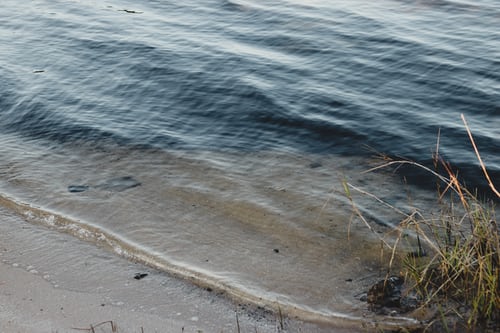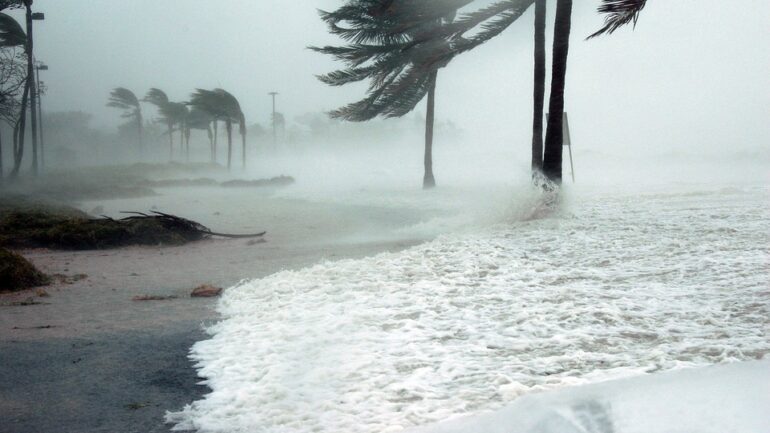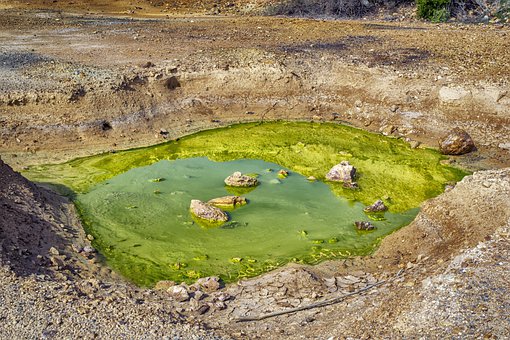By April Day, Director for Save The Water™ | Feb. 19, 2018
State Fails at Water in Florida for Residents
About two years ago, Florida’s drinking water ranked among the United States’ worst. In fact, in 2015, across the United States, about 77 million people were exposed to unsafe water. To be sure, the violations under the federal Safe Drinking Water Act included high levels of toxic arsenic (poison), lead, and other chemicals. But in this article, we will look at another type of failure under the Safe Drinking Water Act: failure to test or report polluted water in Florida.1
Basically, in 2015, about 7.5 million people received water in Florida from utilities that violated drinking water standards. Perhaps as expected, the state repeatedly failed to provide residents with a required annual water quality report on water in Florida.1
Afterwards, by 2018, a United States memo to Florida suggested that Florida wasn’t following water monitoring guidance correctly. In fact, the United States Environmental Protection Agency (EPA) had “identified inconsistencies” regarding when officials tested water in Florida for harmful chemicals.2
After that, in response, the Florida Department of Environmental Protection issued a memo to state environmental officials and county health department officials to clarify local water testing procedures because health officials may not have been monitoring water systems correctly.2 In short, without following a regular time frame to collect samples, comparing water tests between collection times seems like comparing apples and oranges: it doesn’t work.2
Florida at Times Doesn’t Tell About Water in Florida
Interestingly, a mayoral candidate kicked this snowballing public relations disaster into action after filling his new hot tub; he went public with what he found in his water in Florida. To sum up, his new, white hot tub filled with green water. After local officials told him it was a problem with his hose, he conducted independent tests, using two separate companies.2 He thought he’d find out there was algae, a type of water plant,3 in the water because algae causes problems for water in Florida. Guess what? He didn’t.2
Instead, he found out that his water tested for over six times the amount of trihalomethanes, a class of chemicals. According to EPA, this class of chemicals can cause “liver, kidney or central nervous system problems” and can increase the “risk of cancer.”2 In fact, the same sample contained over triple the EPA limit for haloacetic acids. This class of chemicals also increases cancer risks.2
EPA Cites Florida for Drinking Water Violations
Where |
When |
What |
And So…? |
|---|---|---|---|
| Wilton Manors | 2006, 2018 | Failing to monitor for trihalomethanes | Trihalomethanes can cause liver, kidney, or central nervous system problems; by 2018 was 6 times EPA limit |
| Ft. Lauderdale | 2011, 2015, 2016 | Failing to correctly monitor E. coli in the water | Drinking water with E. coli can result in health problems such as severe and long-term kidney failure4 |
| Ft. Lauderdale | 2012, 2014 | Violations for elevated levels of coliform | EPA uses coliform as an indicator of potentially harmful bacteria |
Despite all of these citations and health violations from EPA, Fort Lauderdale continued to divert funds to the tune of $90.4 million from the water-sewer fund to other unrelated city expenses, including an ill-fated streetcar. Undeniably, Fort Lauderdale stopped this practice only after the Sun Sentinel outed them in a public report raising the issues of water in Florida.2
Indeed, an engineering company issued a report in 2017 that the Fiveash Water Treatment Plant in Fort Lauderdale needs repairs, estimated to cost over $100 million.2 Fort Lauderdale’s situation doesn’t fall outside the norm for water in Florida.
Florida Scientists Can’t Find Answers About Water in Florida
In truth, scientists can’t find answers to a highly visible water quality problem for water in Florida: toxic algae blooms. Also known as “harmful algal blooms,” “toxic algae blooms” refers to fast growing algae that “can cause harm to animals, people, or the local ecology.”5 For example, in 1996, a red tide (toxic algae bloom) killed 151 manatees (large marine animals). After that, lawmakers created a task force to investigate its causes in water in Florida. From 1995 to 2007, Florida funded water monitoring points along the Florida coastline, and EPA funded water monitoring at points off the Florida coastline.6
After that, between 2008 and 2014, Florida gutted the funding for water monitoring. So the water monitoring points on the coastline quietly disappeared. Meanwhile, major algae blooms triggered by lake releases occurred in 2005, 2013, 2016, and 2018.6
Now, scientists lobby lawmakers to get funding to monitor the water in Florida. Without information from those monitoring points, scientists can’t do what they do: figure out complex problems and come up with solutions.6 Despite their lobbying efforts, scientists received this explanation: there simply isn’t money in the budget for this water monitoring.6 But Calusa Waterkeeper chief scientist John Cassani, “who monitors water quality on the Southwest coast,” observed, “It’s almost like Florida doesn’t want to know it’s coming.”6
Residents Want Answer About Water in Florida
Later, in 2019, Florida officials didn’t inform local residents in Ocala when elevated levels of the dangerous chemicals perfluorooctanoic acid (PFOA) and perfluorooctane sulfonate (PFOS) were found at the Florida State Fire College.7 The residents depended on their wells for drinking water. Groundwater feeds their wells.
Eventually, Florida officials came to check Linda Lawson’s water. But four months passed from when state officials knew about the elevated levels of PFOS and PFOA and when they notified Lawson and others that it might be in their water. An official said his department “effectively fired”7 him when he pushed to stop the delay and notify people about the water. In fact, the Fire College started using bottled water three months before officials notified local residents.8
After Lawson started getting warnings about her water, she told her friend Miriam Flores, who lives nearby. But Lawson lives in a house. And Flores lives in a mobile home. So when Flores didn’t hear anything from health officials, she called them. The Marion and Alachua County health departments told Flores the issue was “nothing.”7
At the time, Flores said, “I don’t think they care. They don’t want nobody knowing anything, and it’s scary.”7 She worried for her five-year-old son.
After the Times/Herald started asking officials about Flores’ situation, they tested her water, a month after they checked Lawson’s well. Flores’ water tested higher for dangerous chemicals than the Fire College’s water, “more than 20 times the acceptable level for drinking water.”7 A doctor who also served as the former deputy secretary of the Florida Department of Health said that his training required that he share the news about the water “in person and immediately.”7 His boss told him not to do so.
5 Things You Can Do About Your Water
Here are some things that you can do:
- Send your water for testing.
- Go to information meetings or citizen meetings to share your concerns.
- Share information with family, neighbors, and friends.
- Check if your community is impacted by PFOA and PFOS. https://www.ewg.org/interactive-maps/2017_pfa/
- Consider donating to Save the WaterTM to help raise public awareness.
References
- Jenny Staletovich. May 3, 2017. “Florida drinking water ranks among nation’s worst, study finds.” Miami Herald. https://www.miamiherald.com/news/local/environment/article148112799.html
- Caitie Switalski & Daniel Rivero. May 10, 2018. Florida May Not Be Testing Drinking Water Correctly, Says Government Memo. WLRN: Miami, South Florida. http://www.wlrn.org/post/florida-may-not-be-testing-drinking-water-correctly-says-government-memo
- Merriam-Webster Dictionary. “Algae.” https://www.merriam-webster.com/dictionary/algae
- Kevin O’Sullivan. November 21, 2018. “Untested water wells put 1m people at risk of E.Coli – EPA.” The Irish Times. https://www.irishtimes.com/news/environment/untested-water-wells-put-1m-people-at-risk-of-e-coli-epa-1.3704861
- Centers for Disease Control and Prevention. June 19, 2018. “Harmful Algal Bloom (HAB)-Associated Illness.” https://www.cdc.gov/habs/index.html
- Jenny Staletovich. August 7, 2018. Florida gutted water quality monitoring – as killer algae increased. Tampa Bay Times. https://www.tampabay.com/florida-politics/buzz/2018/08/07/florida-gutted-water-quality-monitoring-as-killer-algae-increased/
- Samantha J. Gross & Elizabeth Koh. January 3, 2019. “Florida officials delayed telling residents about tainted water, emails show.” Tampa Bay Times. https://www.tampabay.com/florida-politics/buzz/2019/01/03/florida-officials-delayed-telling-residents-about-bad-water/





